Recombinant Escherichia coli Formamidopyrimidine-DNA glycosylase (mutM)
In Stock-
中文名稱:Recombinant Escherichia coli Formamidopyrimidine-DNA glycosylase (mutM)
-
貨號:CSB-EP361544ENV
-
規格:¥1536
-
圖片:
-
其他:
產品詳情
-
純度:Greater than 95% as determined by SDS-PAGE.
-
生物活性:Not Test
-
基因名:mutM
-
Uniprot No.:
-
別名:Fapy-DNA glycosylase;DNA-apurinic or apyrimidinic site;AP lyase MutM
-
種屬:Escherichia coli (strain K12)
-
蛋白長度:Full Length
-
來源:E.coli
-
分子量:37.2 kDa
-
表達區域:1-269aa
-
氨基酸序列MPELPEVETSRRGIEPHLVGATILHAVVRNGRLRWPVSEEIYRLSDQPVLSVQRRAKYLLLELPEGWIIIHLGMSGSLRILPEELPPEKHDHVDLVMSNGKVLRYTDPRRFGAWLWTKELEGHNVLTHLGPEPLSDDFNGEYLHQKCAKKKTAIKPWLMDNKLVVGVGNIYASESLFAAGIHPDRLASSLSLAECELLARVIKAVLLRSIEQGGTTLKDFLQSDGKPGYFAQELQVYGRKGEPCRVCGTPIVATKHAQRATFYCRQCQK
Note: The complete sequence may include tag sequence, target protein sequence, linker sequence and extra sequence that is translated with the protein sequence for the purpose(s) of secretion, stability, solubility, etc.
If the exact amino acid sequence of this recombinant protein is critical to your application, please explicitly request the full and complete sequence of this protein before ordering. -
蛋白標簽:C-terminal 6xHis-tagged
-
產品提供形式:Liquid or Lyophilized powder
Note: We will preferentially ship the format that we have in stock, however, if you have any special requirement for the format, please remark your requirement when placing the order, we will prepare according to your demand. -
緩沖液:If the delivery form is liquid, the default storage buffer is Tris/PBS-based buffer, 5%-50% glycerol. If the delivery form is lyophilized powder, the buffer before lyophilization is Tris/PBS-based buffer, 6% Trehalose, pH 8.0.
-
復溶:We recommend that this vial be briefly centrifuged prior to opening to bring the contents to the bottom. Please reconstitute protein in deionized sterile water to a concentration of 0.1-1.0 mg/mL.We recommend to add 5-50% of glycerol (final concentration) and aliquot for long-term storage at -20℃/-80℃. Our default final concentration of glycerol is 50%. Customers could use it as reference.
-
儲存條件:Store at -20°C/-80°C upon receipt, aliquoting is necessary for mutiple use. Avoid repeated freeze-thaw cycles.
-
保質期:The shelf life is related to many factors, storage state, buffer ingredients, storage temperature and the stability of the protein itself.
Generally, the shelf life of liquid form is 6 months at -20°C/-80°C. The shelf life of lyophilized form is 12 months at -20°C/-80°C. -
貨期:3-7 business days
-
注意事項:Repeated freezing and thawing is not recommended. Store working aliquots at 4℃ for up to one week.
-
Datasheet & COA:Please contact us to get it.
相關產品
靶點詳情
-
功能:Involved in base excision repair of DNA damaged by oxidation or by mutagenic agents. Acts as DNA glycosylase that recognizes and removes damaged bases. Has a preference for oxidized purines, such as 7,8-dihydro-8-oxoguanine (8-oxoG) and its derivatives such as guanidinohydantoin:C and spiroiminodihydantoin:C, however it also acts on thymine glycol:G, 5,6-dihydrouracil:G and 5-hydroxyuracil:G. Has AP (apurinic/apyrimidinic) lyase activity and introduces nicks in the DNA strand. Cleaves the DNA backbone by beta-delta elimination to generate a single-strand break at the site of the removed base with both 3'- and 5'-phosphates. Cleaves ssDNA containing an AP site.
-
基因功能參考文獻:
- expression of the bacterial DNA repair protein FPG stably protects human lung cells from the mutagenic effects of CS by improving cells' capacity to repair damaged DNA. PMID: 24498234
- Structural and biochemical analysis of DNA helix invasion by the bacterial 8-oxoguanine DNA glycosylase MutM PMID: 23404556
- Fpg protein seemed to be very important in the repair of ultraviolet-C induced DNA lesions. PMID: 22732937
- structures reveal that MutM imposes the same extrusion-prone backbone conformation on the oxoG lesion irrespective of its 5'-neighbor while leaving the rest of the DNA relatively free to adjust to the particular demands of individual sequences PMID: 22465958
- demonstrates that it is feasible to increase resistance of human TM cell to endogenous oxidative damage by FPG gene transfection PMID: 21561236
- Over-expressed, purified and characterized two stable isotope-labeled DNA glycosylases, i.e., (15)N-labeled Escherichia coli formamidopyrimidine DNA glycosylase (Fpg) and (15)N-labeled human 8-oxoguanine-DNA glycosylase (hOGG1). PMID: 21356311
- examination of the structural and dynamic changes that occur in solution when Fpg binds DNA PMID: 15661656
- A base excision repair enzyme involved in the 8-oxoguanine (oxoG) repair pathway. PMID: 15979229
- when the enzyme encounters its true substrate, 8-oxoG.C, the complex enters the productive catalytic reaction after approximately 50 ms, partitioning the substrate away from the competing dissociation process PMID: 17209553
- The substrate specificity of two similar enzymes, MutM of E. coli and OGG1 of H. sapiens, is reported. PMID: 17536801
- The high affinity and efficient activity of EcFpg toward the hydantoin lesions suggest that EcFpg mediates repair of the lesions in vivo. PMID: 17655276
- Data show a lack of interaction of mutM with dnaX36 since the double dnaX36 mutM strains did not show any major changes in the frequency of G.CT.A transversions compared to the single dnaX36 strain. PMID: 18156258
- analysis of the the driving forces that dictate Fpg enzyme efficiency and specificity, which helps to elucidate the energy landscape for lesion recognition and repair PMID: 18172202
- Data show that processive cleavage by Fpg does not correlate with their substrate specificity and under nearly physiological salt conditions may be replaced with the distributive mode of action. PMID: 18672903
顯示更多
收起更多
-
蛋白家族:FPG family
-
數據庫鏈接:
KEGG: ecj:JW3610
STRING: 316385.ECDH10B_3817
Most popular with customers
-
Recombinant Human T-cell surface protein tactile (CD96), partial (Active)
Express system: Mammalian cell
Species: Homo sapiens (Human)
-
Recombinant Human Mucin-17 (MUC17), partial (Active)
Express system: Mammalian cell
Species: Homo sapiens (Human)
-
Recombinant Mouse Complement component C1q receptor (Cd93), partial (Active)
Express system: Mammalian cell
Species: Mus musculus (Mouse)
-
Express system: Mammalian cell
Species: Homo sapiens (Human)
-
Recombinant Human Myosin regulatory light polypeptide 9 (MYL9) (Active)
Express system: Yeast
Species: Homo sapiens (Human)
-
Recombinant Human Tumor necrosis factor ligand superfamily member 15(TNFSF15) (Active)
Express system: Mammalian cell
Species: Homo sapiens (Human)

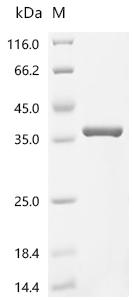

-AC1.jpg)
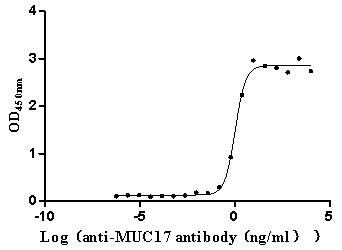
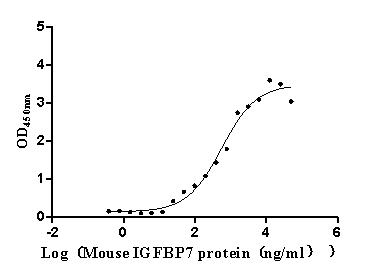
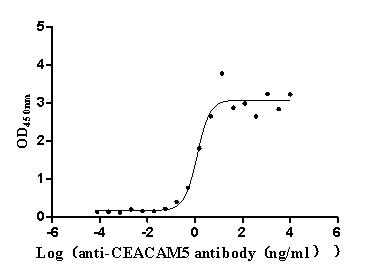
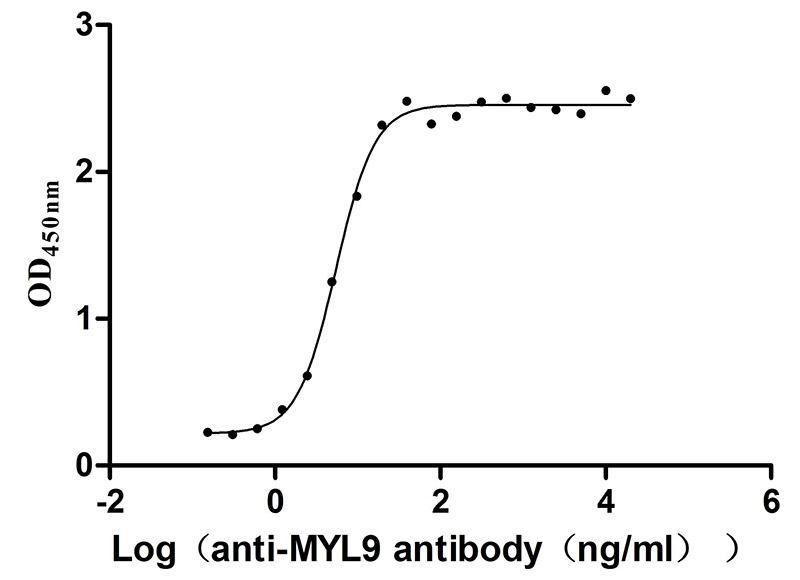
-AC1.jpg)









